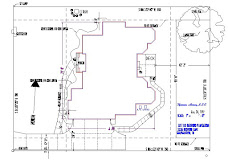 |
| passive solar greenhouse at 7500 ft elev. Town of Boulder in back. |
The climate and south slope location were well suited to passive solar techniques, and these expenditures were able to payback in a reasonable amount of time in the mid 1980’s. These design elements worked very well to moderate the daily temperature swings through the seasons. In addition I used inexpensive electric baseboard space heating that was easily zoned in each room, and an electric demand load shedder could automatically turn off heat in a little-used area or the electric water heater or well pump. We gathered and cut our own dead firewood frequently for a cast iron wood stove used on the coldest nights. My window coverings were panels of foil-faced urethane (later fabric covered) left over from the unused wall sheathing.
Ventilated operable skylights in the ceiling furnished summer cooling from the chimney effect. No mechanical air conditioning was required at 7400 feet above sea level, and the roof overhangs were dimensioned to optimize the resulting shade in summer as well as the solar gain from the lower winter sun altitude angle.
This home design saved a lot of money on utilities and was comfortable in spite of a high heating degree-day location at the 7,800-foot elevation -see photo left. The utility bills with an all-electric, passive solar home were flat and constant throughout the winter months (consistently at $100 per month for 2400 sq ft. when others were $300 to $400.) The nation became more interested in conservation of energy in the late 1970’s and early 1980’s, following President Nixon’s government price controls on oil in 1973 which led to price increases and an oil crisis, as well as President Carter’s shortages of gas and long lines at the pump in 1979.
To preview the book that Geoff wrote cut and paste the following link to your browser: https://www.createspace.com/Preview/1194783
To order the 306 page book cut and paste the following link to your browser:
https://www.createspace.com/6118813







